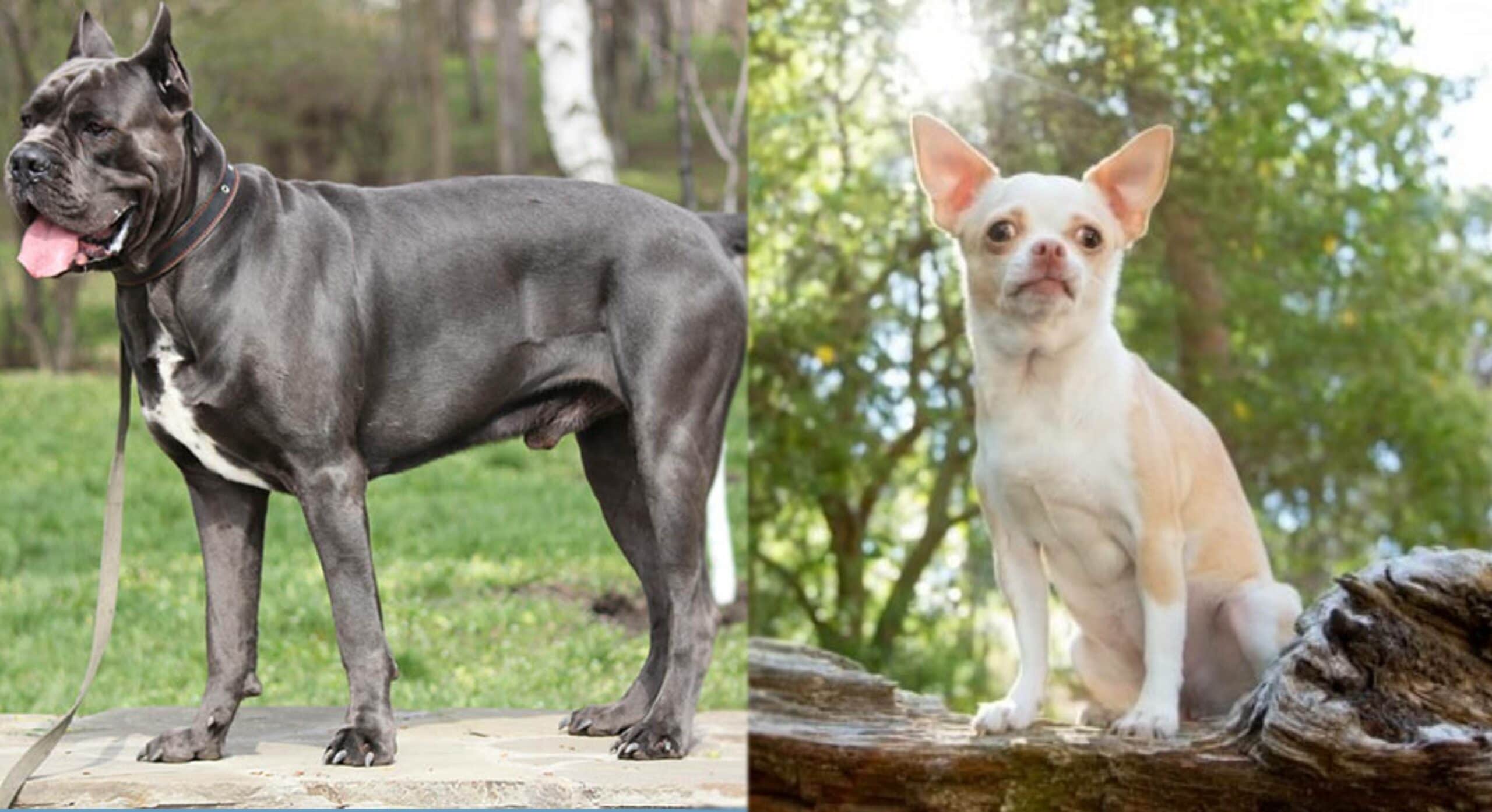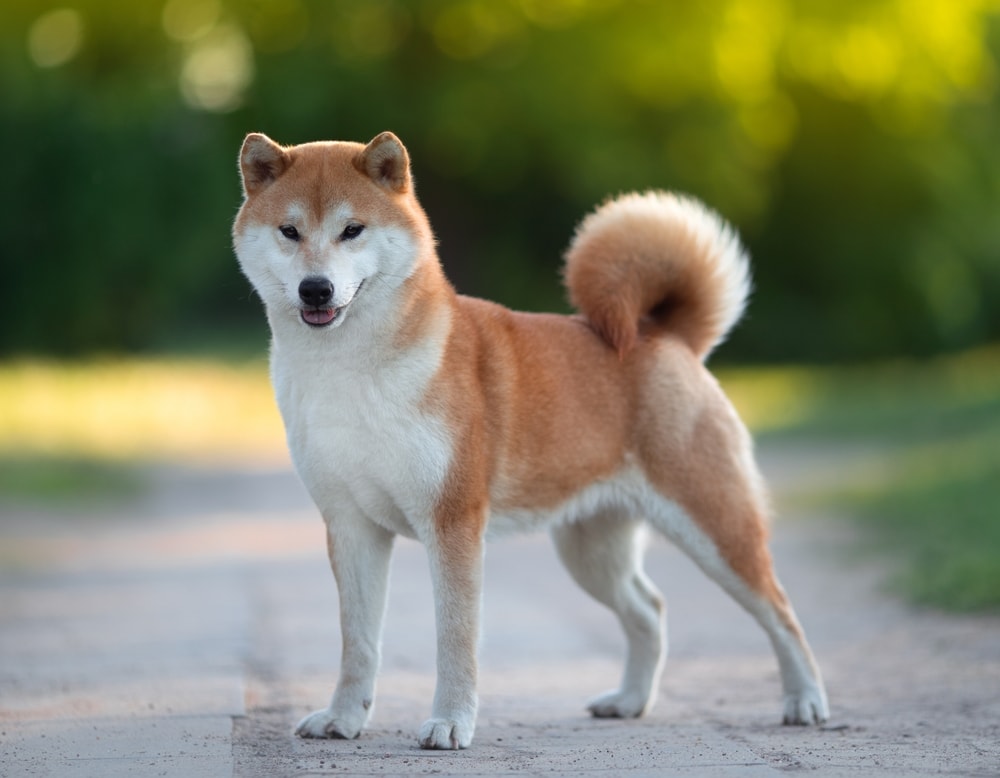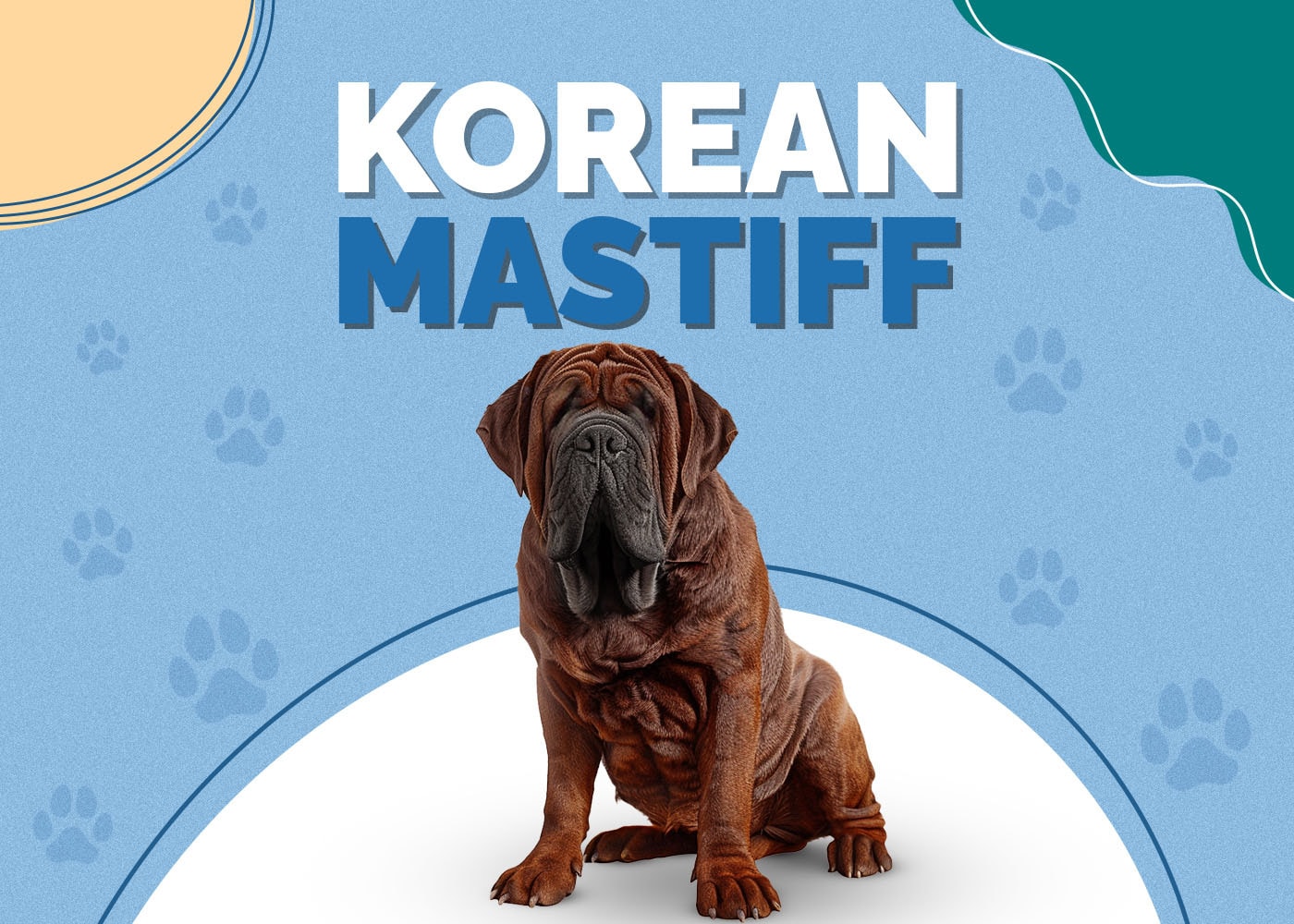Sable German Shepherd: Info, Pictures, Characteristics & Facts

Updated on
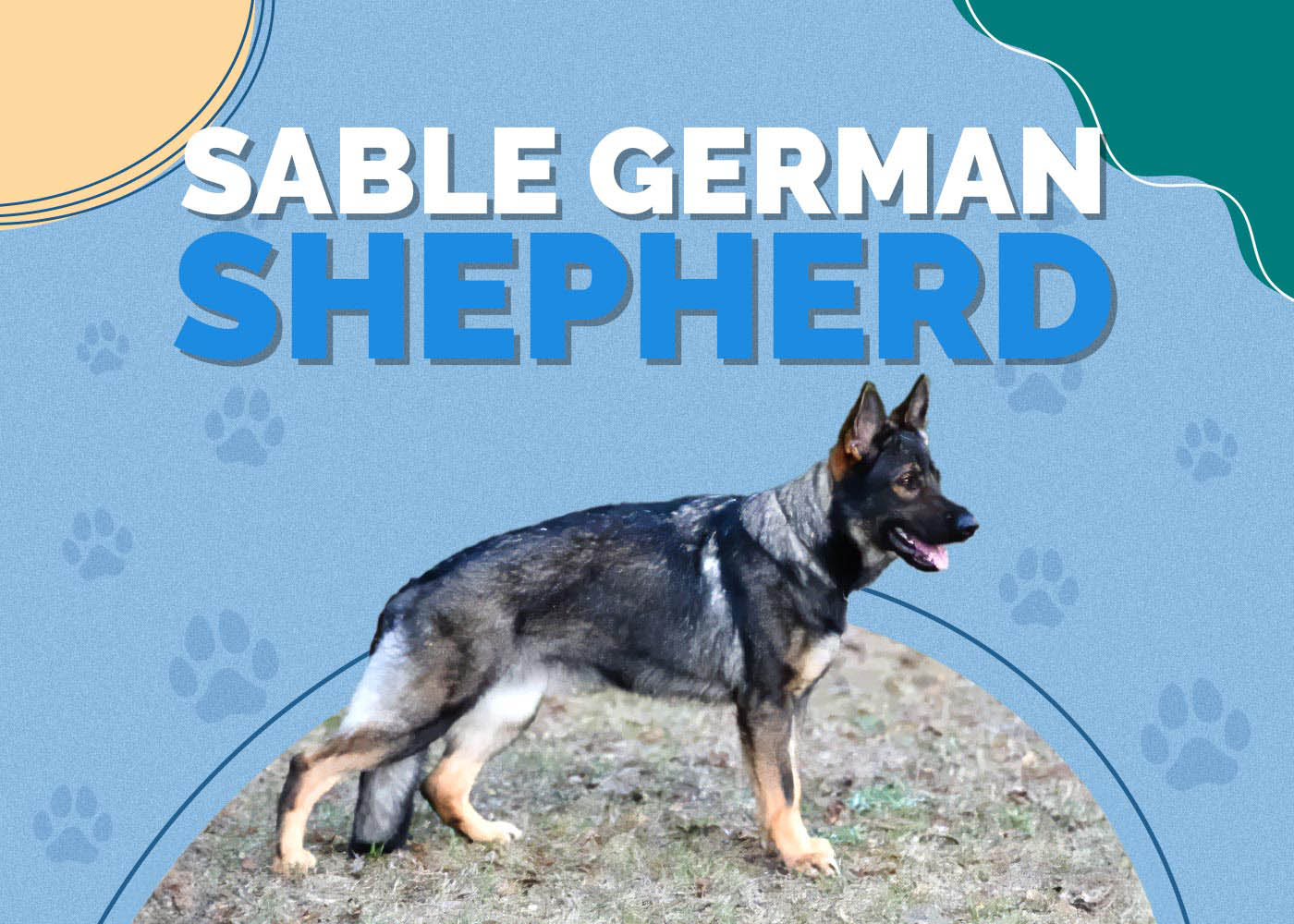
| Height: | 22–26 inches |
| Weight: | 50–90 pounds |
| Lifespan: | 10 to 14 years |
| Colors: | Black, tan, and brown sable |
| Suitable for: | Families, couples, active individuals |
| Temperament: | Intelligent, noble, loyal, agile, confident, courageous, patient, affectionate |
The Sable German Shepherd is one of the most commonly found colorings within the German Shepherd breed and in fact, fits the founding breeder’s ideal description of what a German Shepherd should look like. These dogs make great family pets due to their incredible loyalty and devotion and will gladly put their life on the line to protect their family. That being said, German Shepherds have an aloof and independent nature, and you’ll need to work hard to form a close bond with these dogs—they are extremely loyal and picky about whom they form strong bonds.
Sable German Shepherd’s coats have individual hairs with bands of distinct coloring, giving them their unique, wolf-like coat. This sable coloring is caused by the “agouti” gene, of which scientists have identified four different variations, although there are likely more. As far as has been studied, these genes do not affect the German Shepherd’s health, temperament, or behavior.
In this article, we’ll take an in-depth look at this loyal, devoted, and uniquely beautiful breed.
Sable German Shepherd Puppies
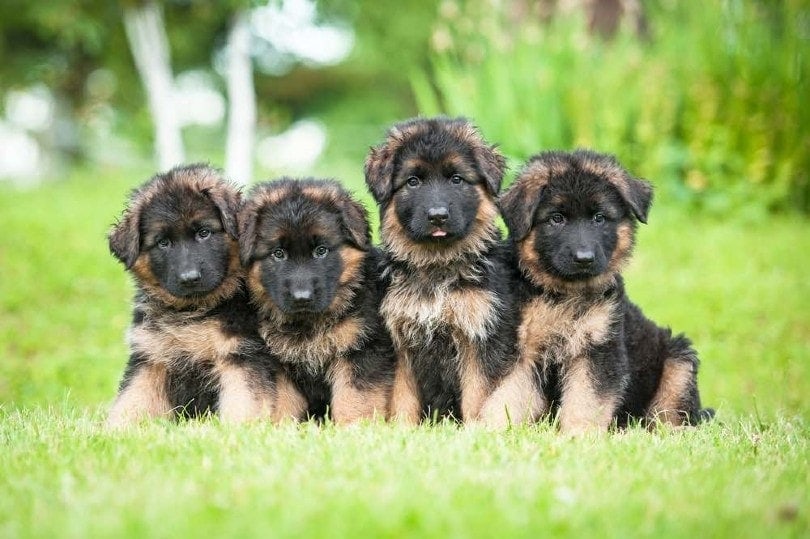
German Shepherds have long been the first choice as working and service dogs because they are highly devoted, loyal, and courageous animals. They are generally easy to train by experienced owners but need a firm hand and consistent routine to train successfully. While this is possible for novice owners, they will present more of a challenge than some other breeds.
Before buying a German Shepherd, you need to take into consideration the massive responsibility of owning one of these animals. They are highly protective of their owners, which can lead to aggressive and territorial behavior at times, and they have a powerful prey drive. These dogs were bred for and have long been a working breed and do best with a specific job to do. It will take a great deal of time, patience, and dedication to look after a dog of this caliber, so you need to understand that a German Shepherd is not the kind of dog that can be left at home alone for long periods. This will quickly lead to destructive and even aggressive behavior.
With the power and working history of this breed, good training and socialization are essential with owning a German Shepherd.
3 Little-Known Facts About the Sable German Shepherd
1. They are one of the most popular breeds in the United States
Behind only the family-friendly Labrador Retriever, the German Shepherd is the second most popular breed in the U.S. This is mostly due to the breed’s diversity, as they are not only great family dogs but also expert working dogs, show dogs, and service dogs, which probably accounts for their high popularity.
2. German Shepherds Go By Two Names
Most dog owners know them simply as German Shepherds, but their name has changed over the years, and they are still referred to by different names in other countries. In Germany, where the breed originated, they are known as the Deutscher Schäferhund, and in most of Europe, they are known as the Alsatian, named after the German-French border of “Alsace.” The name originated during WW2 when British soldiers, who used the dog widely for various jobs, such as mine detecting and delivering messages, did not want to use the word “German” to describe their dogs, as this was the enemy they were fighting.
Many people confuse the two as different breeds, but they are the same animal.
3. Sable is One of 11 Recognized Colors
While Sable is the flagship of the German Shepherd breed, the American Kennel Club (AKC) officially recognizes 11 different color variations. Sable, tan, and black color variations are among the most common and recognizable coats, but other recognized colors include black and red, black and cream, grey, and even blue. White German Shepherds also exist, although they are not part of the AKC’s recognized registry.
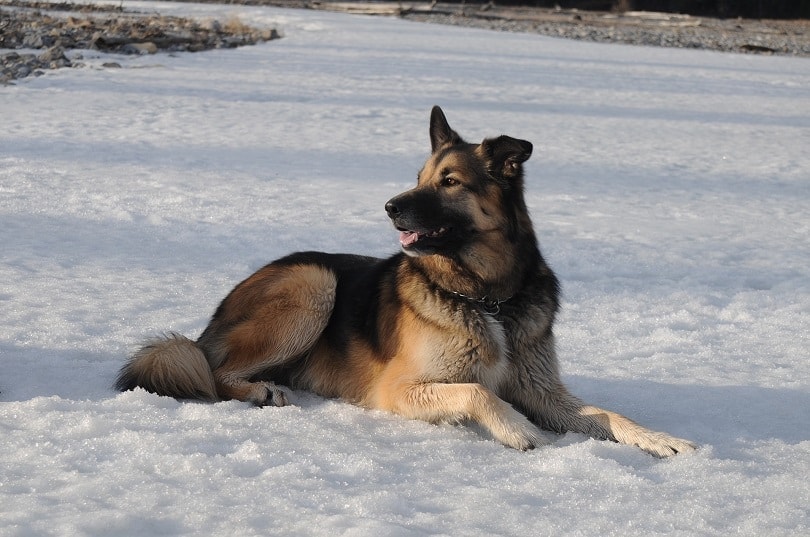
Temperament & Intelligence of the Sable German Shepherd 🧠
Sable German Shepherds are just a common color variation of the standard German Shepherd, and this coloration does not affect the dog’s temperament or character, so they are identical in personality. German Shepherds are known for being mildly aloof and independent dogs, and this is often mistaken for aggression or unpredictable behavior, but in truth, these dogs are rarely aggressive when trained properly. While they are reserved and aloof toward new faces and do not tend to make friends easily, once they get to know you, they are extremely friendly and loyal animals.
They make great family dogs because they are loyal, gentle, and friendly with their owners. They are well known for being highly protective and powerful animals, making them ideal guard dogs, and they are typically only aggressive when provoked or protecting their family. They are supremely intelligent animals that can be trained to do almost any job, leading to their wide use in service and military applications.
These dogs thrive off of having a specific job to do, especially with their owners, so they are happiest when close to their human family. Indeed, close companionship is a must with the breed, and they will not do well being left alone for extended periods. They will swiftly become bored and frustrated, and this can lead to destructive behavior and even aggression if left unchecked. If you are away from home frequently, the German Shepherd is not the breed for you.
Are Sable German Shepherds Good for Families? 🏡
Sable German Shepherds are wonderful family dogs that are impeccably loyal and will gladly lay down their lives in the protection of their owners. They are generally gentle and affectionate with children, although they may accidentally knock over small kids while playing. Of course, good training and socialization are essential for this powerful breed.
Do Sable German Shepherds Get Along with Other Pets? 🐶 😽
German Shepherds have a powerful prey drive and need early socialization and expert training in homes with smaller pets. Other dogs are not usually an issue, but they will need to be socialized early to get along with the family cat!
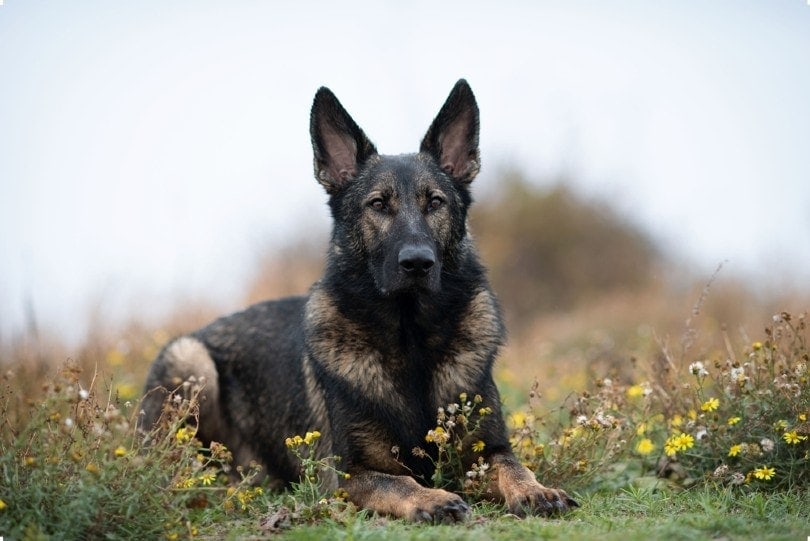
Things to Know When Owning a Sable German Shepherd
Food & Diet Requirements 🦴
The Sable German Shepherd’s diet should be specially formulated for large breeds. They’ll need around 3 cups of high-quality dry kibble per day, divided into two or three meals. This depends on their age, energy levels, and size, so you should consult the manufacturer’s instructions to check the exact amount that you need to feed them. Make sure that their food has an animal-based protein as the first listed ingredient and that the food is free from filler ingredients like wheat, corn, and soy.
We recommend substituting this dry food with canned wet food or lean meats and organ meats to add variety and give an amino acid and protein boost. Food with at least 30%–40% protein content and around 20% fat is best, as this will give them the energy they need to thrive.
Large breeds like the German Shepherd Sable are prone to joint issues, so you need to be careful of overfeeding them. Avoid giving them too many treats or table scraps, and give them a diet rich in healthy oils to aid their joint health.
Sable German Shepherd Exercise Requirements 🐕
Sable German Shepherds are working dogs that have historically been used for a variety of intensive jobs, and as such, they need a great deal of exercise to stay healthy and happy. Their high intelligence means they’ll also need a ton of mental and physical stimulation, so be sure to engage them in activities that keep their minds active. This includes agility sports and training, as well as puzzle toys and games.
These large dogs will need at least 1–2 hours of intensive exercise every day to prevent boredom and destructive behavior, although more is better. They’ll need a large backyard to run around in, so they are not suited for apartment living. They are great companions if you are an outdoor enthusiast and will adore joining you on runs, hikes, and cycling. They have a natural love for water and will enjoy an occasional swim too.
One point to keep in mind is to be careful about over-exercising German Shepherds as puppies. While these dogs are active and agile, during the first year, they are rapidly growing, and too much exercise can be harmful to their skeletal development and may cause joint issues later. Most German Shepherd breeders recommend exercising your dog 5 minutes for every month of age, so by a year old, they’ll be ready for around an hour of exercise.
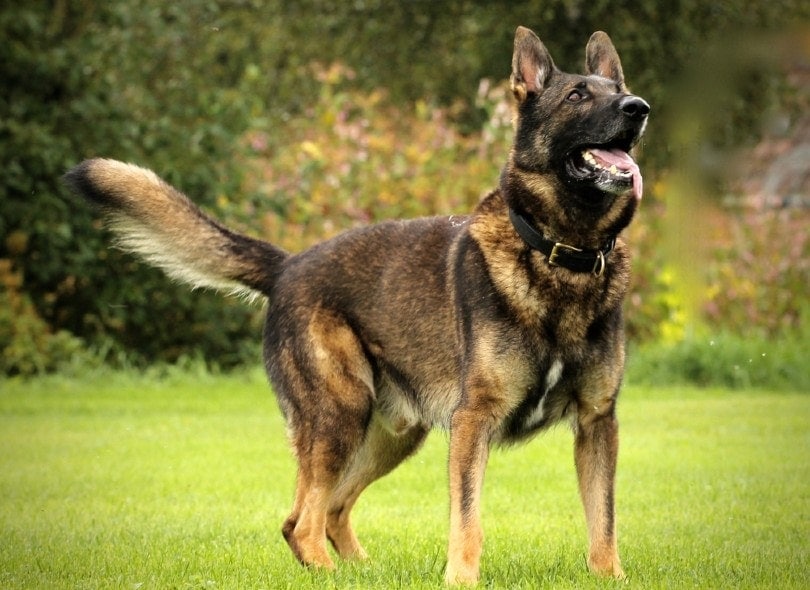
Training 🦮
With their high intellect and unwavering loyalty, German Shepherds are a joy to train. While they can be aloof and independently-minded at times, making training difficult for novice owners, they typically love the process, and training this breed is usually relatively easy. They should be trained from a young age, preferably from the day that you bring them home, as this will mitigate any bad habit formation that may potentially occur.
Positive reinforcement training methods are highly recommended for this powerful breed, as too much harsh scolding or reprimands may lead to an unresponsive dog at best or aggressive behavior at worst. This method uses praise and rewards for a job well done, and this promotes good behavior in the future rather than punishment for bad behavior.
Socialization is an often-overlooked aspect of training but is vital to the success of properly training your dog. Socialization with other dogs from an early age will lead to less distraction while in public places, and your Shepherd will be far more likely to follow commands with other dogs around. Also, we recommend engaging in training sessions after a short exercise session, as your pooch will be less distracted, more attentive, and thus, more likely to learn.
Grooming ✂️
Sable German Shepherds have a thick double coat that is fairly high shedding. They will shed moderately all year round and then “blow” their coats twice a year at the change of seasons. Even with daily brushing, there is no way around having a ton of hair around your home, so you may need to invest in a pet vacuum cleaner before bringing one of these pooches home!
That said, brushing your Shepherd a minimum of two or three times a week will help a great deal, especially when they are shedding heavily. This will remove any dead hair and keep their coat smooth and healthy. They shouldn’t be bathed unless they get excessively muddy, and even then, clean, warm water should do the trick. Avoid using human soaps or shampoos, as this can strip their coats of natural oils; stick to water or special pet shampoos.
Other than that, they need a toenail trimming once a month or so, depending on their activity levels, and regular teeth brushing will stop any tartar build-up and potential dental issues. Soft, safe chew toys and high-quality kibble can also help keep their teeth plaque-free, but you should still brush their teeth regularly.
Health and Conditions ❤️
Sable German Shepherds are prone to the same health issues as any other color German Shepherd, although the breed is fairly healthy overall. Most responsible breeders will make sure your dog is free from most of the genetic problems that can affect these dogs before selling them, but of course, there is no real definitive way to avoid some of these issues.
Being such a large breed, German Shepherds are prone to joint issues like hip and elbow dysplasia, as well as a progressive degeneration of the spinal cord called degenerative myelopathy. This disease may eventually progress to the point where your dog has trouble walking due to the lameness in their back legs, and unfortunately, most of the time, there is no treatment.
Gastric dilatation-volvulus, commonly known as bloat or gastric torsion, is another condition to keep an eye out for. This is common in large breeds with deep chests like the German Shepherd. The condition is caused by dogs eating large meals too quickly, causing a build-up of gas in the stomach, which then twists, cutting off blood flow. The condition is treatable but frequently results in death, as there is not much time to get to the vet. Make sure your dog eats two to three small meals a day, as slowly as possible, and doesn’t eat after vigorous exercise.
- Obesity
- Allergies
- Hip and elbow dysplasia
- Degenerative myelopathy
- Gastric dilatation-volvulus
Male vs Female
If you are thinking of bringing home a Sable German Shepherd, it is fairly important to factor their sex into your decision too. Male German Shepherds are more inclined to get attached to one owner, and they can become highly possessive at times. Males can also be dominant toward other dogs, far more than females, although with proper training, this is rarely an issue. Males are usually bigger and more muscular and powerful than females, leading them to be used as service and military dogs more often than females.
Females usually have a great deal of love and affection for the entire family and don’t attach themselves to one owner in the same way that males tend to do. They are more sensitive than males and mature quicker, leading them to be easier to train in general.
Choosing between a male and female Shepherd is largely a case of personal preference, and although you should keep the mentioned traits firmly in mind, they are largely anecdotal. Once a male has been neutered or a female has been spayed, these differences are negligible, and your dog’s personality will be influenced far more by their training and upbringing than their sex.
Final Thoughts: Sable German Shepherd
The Sable German Shepherd is an iconic dog and a breed favored as a working and service dog for decades. This is due to their unmatched loyalty, devotion, and intelligence and the fact that they can be trained to perform almost any job. That being said, they make ideal family dogs for the same reasons. They are alert, loyal, and attentive, making them perfect guard dogs for your family, and they have a ton of love and affection to give. They are typically easy to train but require a great deal of commitment, time, and patience to avoid destructive behavior.
The Sable German Shepherd is an ideal companion for outdoor enthusiasts and will make a great exercise companion, family pooch, or hard-working dog.
Featured Image Credit to: TanyaCPhotography, Shutterstock





